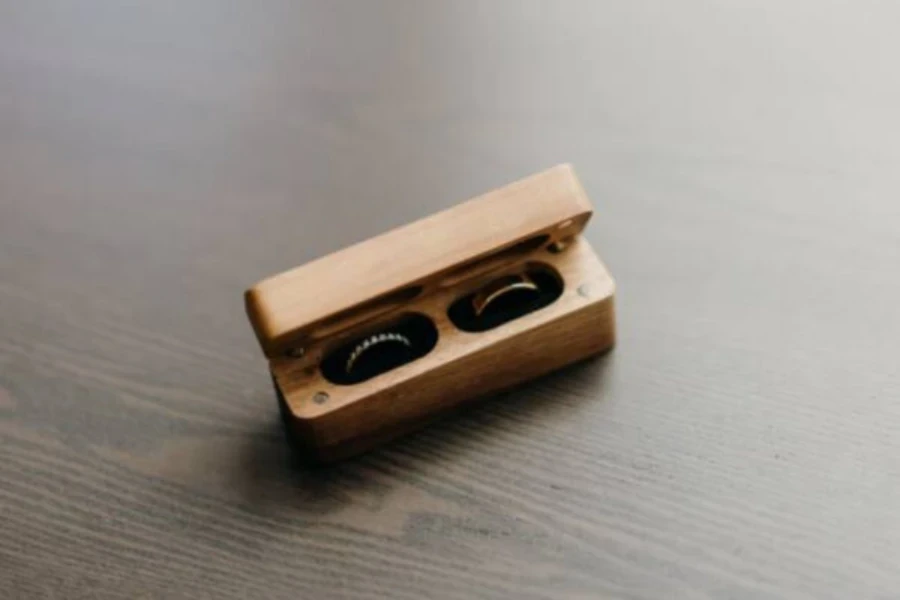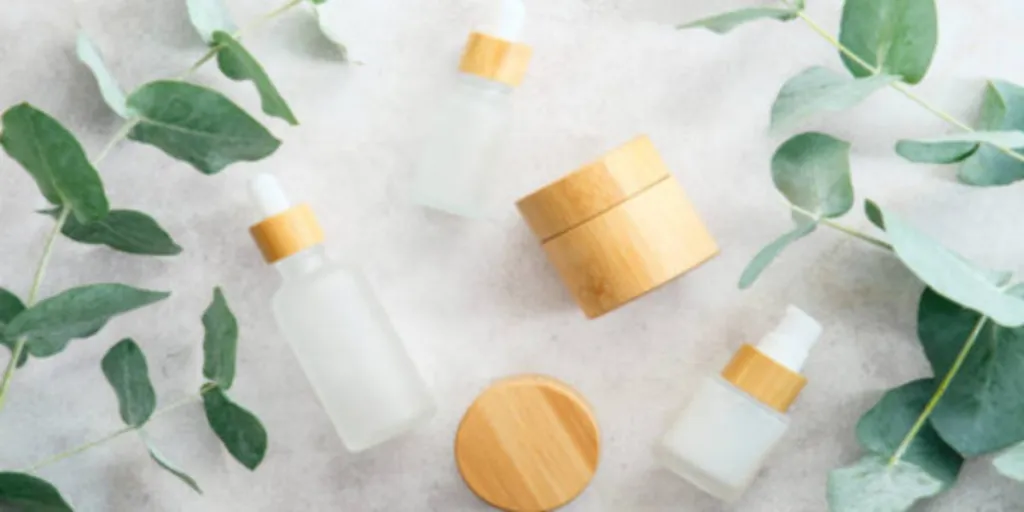Product packaging has become significantly more eco-conscious in recent years as consumer lifestyle changes have increased demand for sustainable products. To replace traditional plastic packaging, many companies are now turning to sturdy and reusable wood and bamboo packaging.
This brief guide will help buyers navigate the range of wooden and bamboo packaging available on the market today, so they can find the best solution for their needs.
Table of Contents
Growth of wooden and bamboo packaging
What is wooden and bamboo packaging?
Factors to consider when choosing wooden and bamboo packaging
How to prevent insects in wooden and bamboo packaging
Types of wooden and bamboo packaging
Export policies of wooden and bamboo packaging
The future of eco-friendly packaging
Growth of wooden and bamboo packaging
Although wooden and bamboo packaging isn’t a new invention, the market is seeing a significant increase in demand for these products from many different industries. Consumers are now more likely than ever to choose a product that’s been packaged using renewable resources that can also be reused after its original purpose.
In terms of the global market value of this type of packaging, the bamboo packaging market is set to reach at least USD 895.1 million by 2032, at a compound annual growth rate (CAGR) of 6.4% between 2022 and 2032. Wooden packaging is also seeing a large increase in sales. By 2025 the wooden packaging market is expected to rise to USD 4.21 billion and will have a CAGR of 5.39% over a 5 year period.
What is wooden and bamboo packaging?
When it comes to eco-friendly packaging, businesses now have a variety of materials to choose from that weren’t available even a decade ago. Wood packaging comes from trees such as oak, fir, beech, and willow and is known in the industry for its strength, resistance to corrosion, and moisture absorption.
Bamboo packaging, on the other hand, is known for packaging lighter products and comes from the grass family. The packaging is biodegradable and can be composted at home if necessary since it contains no harmful or toxic materials. Bamboo packaging is a fantastic option for keeping products protected and is one of the top selling alternatives to plastic.
Factors to consider when choosing wooden and bamboo packaging
As with all packaging types, there are some important factors to take into account before purchasing either wood or bamboo packaging. These include:
Size
Depending on what type of product is being packaged, the size is a definite selling point. The size of the packaging needs to completely cover the product but at the same time should have some extra space inside for either extra padded packaging, such as biodegradable packing peanuts, or to allow for extra movement so the product isn’t touching the edges.
Weight
For the most part, packaging should be lightweight. This will not only cut down on shipping costs but will also have less of an impact on the environment. Bamboo is a much lighter material than wood, which is why a lot of companies now use it to not only package their products but also ship their items in.
Closure type
Wooden packaging most commonly comes in the form of boxes, and with these boxes there are different closure types to take into account. These can include a sliding lid, clasp, hinged lid, or a pop-off lid. These types of closures can also be considered for bamboo packaging, but bamboo is also used to make shipping bags, where closures such as zippered, sealed, and air compressed should be considered.
Durability
There’s nothing worse than having low quality packaging materials. Luckily, both wood and bamboo are two of the most durable types of packaging on the market. Bamboo packaging bags, for example, are ideal for shipping clothing as they’re waterproof and can be disposed of later with no harm to the environment. Wooden boxes too are good for shipping more delicate goods such as bottles of wine as they’re less likely to break upon impact.
How to prevent insects in wooden and bamboo packaging
Both wood and bamboo are natural resources meaning they are more susceptible to insects than other types of packaging material. Some tips to consider concerning how to prevent insects getting into wooden and bamboo packaging are: keep the materials inside whenever possible, keep the packaging away from living trees, don’t store the materials in open areas where there is grass or weeds, keep the wood or bamboo off of the ground, and ensure that the raw materials aren’t stored under lights that can attract insects.
Types of wooden and bamboo packaging
Both wood and bamboo can be used in various industries, which is what makes both materials so versatile. The most popular types of packing today include wooden wine boxes, bamboo clothing packaging, bamboo cosmetic boxes, and wooden jewelry and watch boxes.
Wooden wine boxes
Wooden boxes are often used to display expensive bottles of wine or to present wine as a gift. Compared to bamboo, which is also used for wine boxes now, wood is slightly sturdier and gives off a more elegant look and finish to the box. These boxes can be fully customized and lined with a velvet padding to really complete the high-end look of the box as a whole.
There are different types of wooden wine boxes to consider though. One of the most popular styles has a sliding lid on the top that allows for easy opening and is ideal for displaying the bottle on a store shelf. Other types of boxes include ones with a hinged closure and in some cases magnetic lids are being used. One thing’s for sure, there’s never any complaints when it comes to wooden wine boxes.
Bamboo clothing packaging
Bamboo is a very versatile material to use in packaging, which is why it’s quickly becoming the top alternative to plastic. The apparel industry is increasingly using bamboo packaging for clothing, as its properties mean that the clothing inside will be kept safe and dry, and after use the packaging is fully biodegradable.
There are different types of bamboo packaging that are being used for clothing. One of these is the bamboo shipping bag, which is often used for t-shirts and other lightweight items of clothing. Another example is the bamboo box, which can be used to hold multiple items of clothing or in most cases it’s used to hold shoes. Bamboo is the perfect non-wood raw material for use in pulping and by using bamboo fiber to create the boxes the packaging becomes fully biodegradable too.
Bamboo cosmetic packaging
In the cosmetics industry, bamboo is turning out to be a fantastic option for cream jars, makeup, and even body lotion and soap. By using bamboo as a replacement for plastic and metal packaging, it helps to cut down on the overall waste produced by the cosmetics industry, and they can easily be reused or refilled once the initial product has come to an end.
When it comes to cosmetic packaging there are a lot of options for businesses to choose from. The small cosmetic jars are used to hold creams and are perfect for traveling thanks to their size. Bamboo cosmetic bottles are also a good way to store soaps, lotions, and creams and often come in a complete set with different products.
Wooden jewelry and watch boxes
Jewelry and watches need to be protected, both during transportation and while in storage at a shop or at home. Wooden packaging is very useful for both of these luxury items, and the trend of using wood to hold jewelry and watches is continuing to grow. These boxes can be standard or made of a luxurious wood which helps to elevate the appeal of the item inside.
Wooden jewelry boxes can come in a variety of sizes, depending on how many watches or pieces of jewelry are inside. The most popular style will have a velvet interior and a space hollowed out for the jewelry to snuggly fit inside without moving. The watch box on the other hand will have a mostly padded interior with a small section that the watch can sit in, with plenty of open space around it so that there is less chance of it becoming damaged.

Export policies of wooden and bamboo packaging
Now that you have all of the background information about wooden and bamboo packaging, what about the exportation rules? Fully finished products made of wood or bamboo don’t fall under the same exportation rules as raw products. These rules can change depending on the country the product is being exported to so it’s important to check this information before shipping.
For example, importing wood and bamboo products and packaging to the USA in their raw form must undergo a drying/splitting process and have all of the seeds removed before entering the country. However, if finished products are being imported they don’t need a USDA import permit.
The future of eco-friendly packaging
There are many factors to consider when choosing the right wooden and bamboo packaging for a business, including the size, weight, closure type, and durability. That being said, as wood and bamboo continue to replace other non-sustainable packaging materials, there are many ways in which they can be used regardless of the industry. Currently, the most popular types of packaging include wooden wine boxes, bamboo clothing packaging, bamboo cosmetic packaging, and wooden jewelry and watch boxes.
The future of eco-friendly packaging is very bright. Emerging new technologies are constantly creating sustainable materials such as bamboo that can be used across all industries. Plastic is quickly becoming a thing of the past, as consumers are increasingly looking to purchase goods that are packaged using eco-friendly materials.




